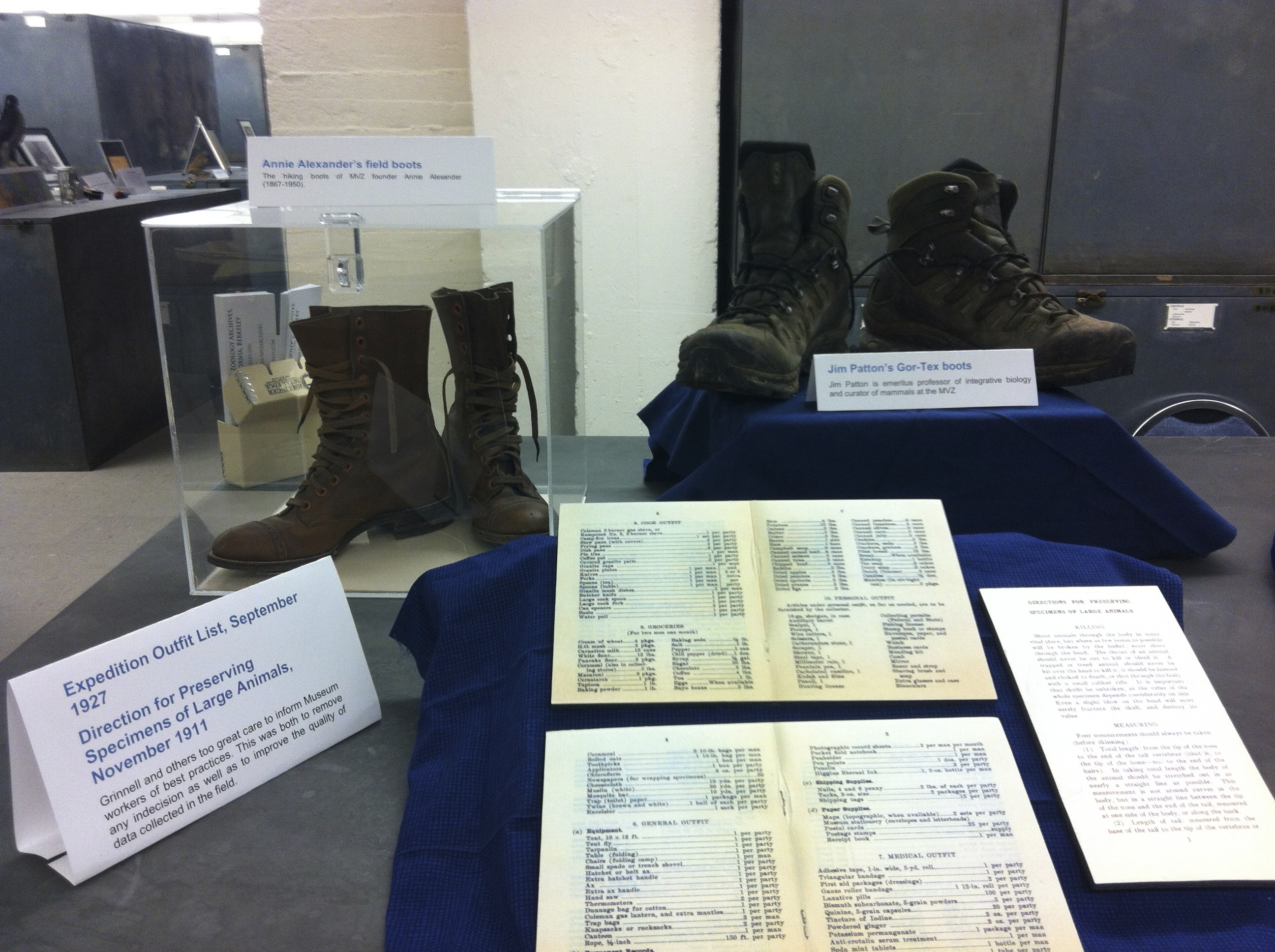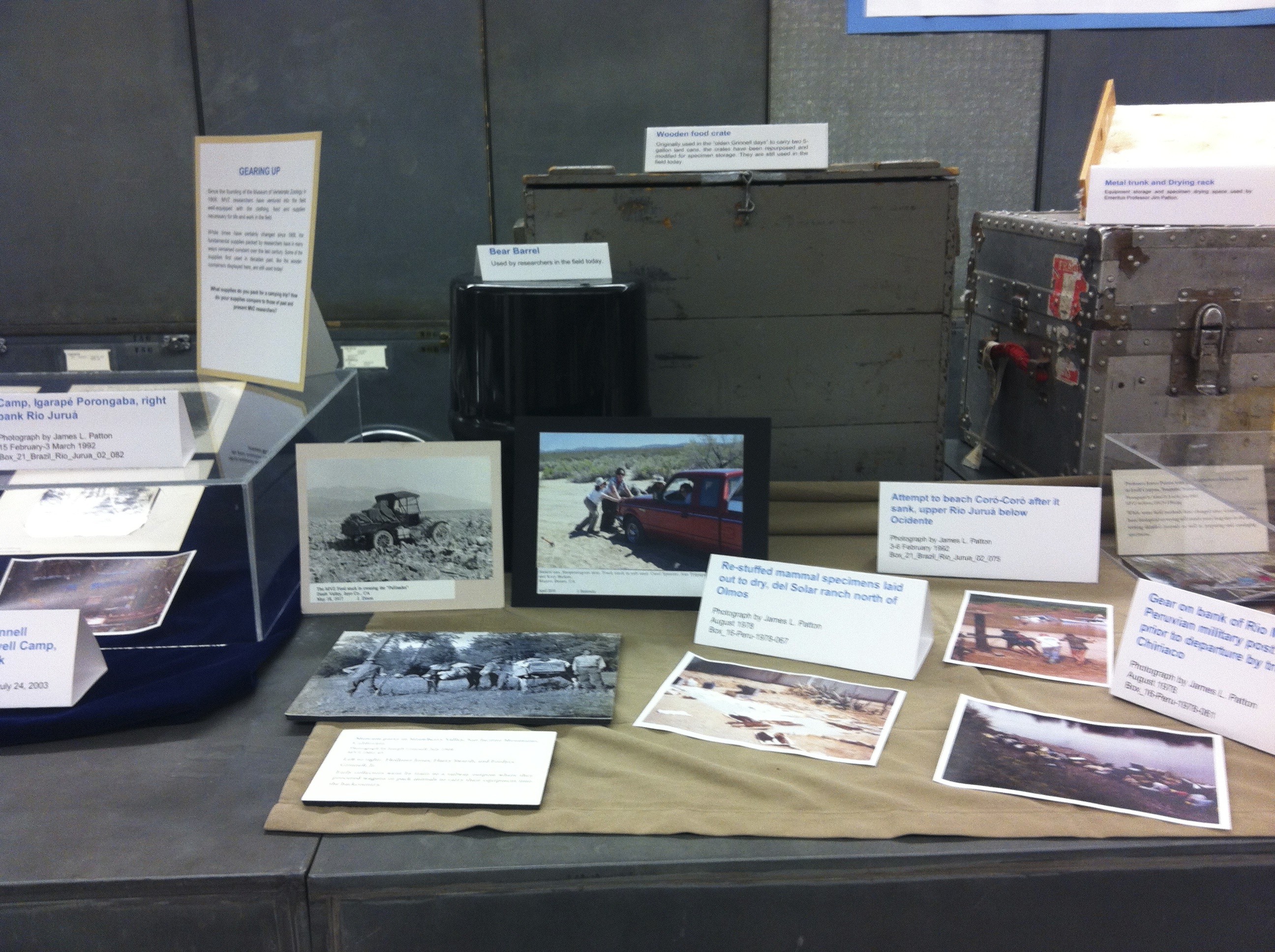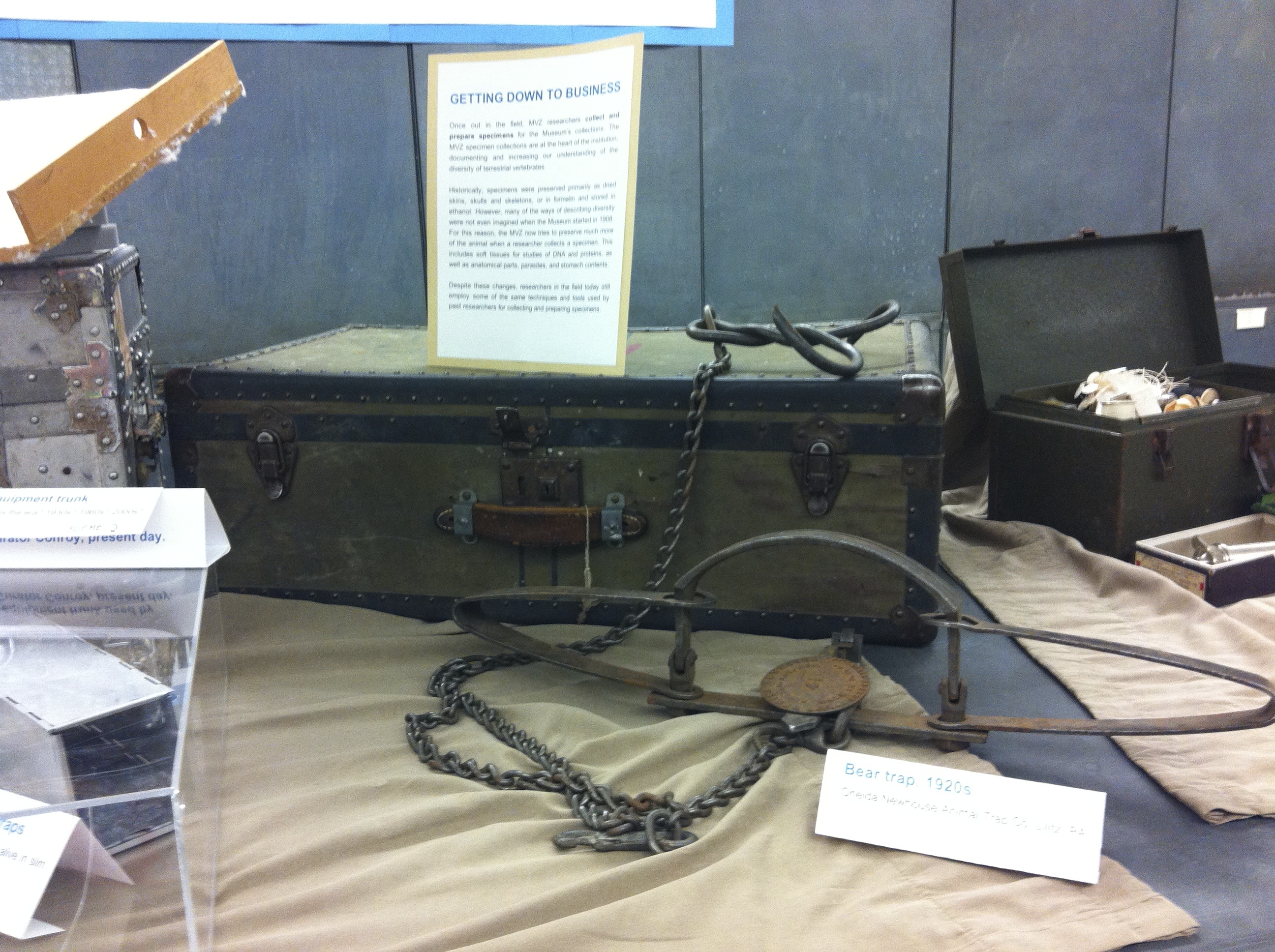The MVZ opened its doors to the public for yet another successful Cal Day event this past Saturday, and the day presented an excellent opportunity to share some of the history found within the MVZ’s archival collections.
The MVZ Archives exhibit, entitled In the Field: 105 Years of MVZ Fieldwork, compared the equipment, tools, and methods employed by MVZ researchers in the field today to those utilized throughout the Museum’s history. Select highlights from the exhibit included Annie Alexander’s hiking boots, a bear trap from the 1920s, a bird skinning kit from the 1950s, and a wealth of images depicting MVZ researchers working in the field over the last century.
For those who missed Cal Day, here is a brief look at the exhibit and its content:
Gearing Up

Annie Alexander’s hiking boots and the hiking boots of Jim Patton, emeritus professor of integrative biology and curator of mammals at the MVZ, sit at the back of the display. An expedition outfit list from 1927 and a page from 1911’s “Direction for Preserving Specimens of Large Animals” are displayed in the foreground.
Since the founding of the Museum of Vertebrate Zoology in 1908, MVZ researchers have ventured into the field well-equipped with the clothing, food and supplies necessary for life and work in the field.
While times have certainly changed since 1908, the fundamental supplies packed by researchers have in many ways remained constant over the last century. Some of the supplies first used in decades past, like the wooden food crate displayed in this exhibit (second image on the right), are still used today .

A wooden crate and bear barrel used by researchers today to hold food, as well as a variety of photographs showing past and present MVZ researchers in the field.
Getting Down to Business
Once out in the field, MVZ researchers collect and prepare specimens for the Museum’s collections. The MVZ specimen collections are at the heart of the institution, documenting and increasing our understanding of the diversity of terrestrial vertebrates.
Historically, specimens were preserved primarily as dried skins, skulls and skeletons, or in formalin and stored in ethanol.

An equipment trunk used in the field today by Chris Conroy, Staff Curator of Mammals. The trunk is displayed with a bear trap from the 1920s.
However, many of the ways of describing diversity were not even imagined when the Museum started in 1908. For this reason, the MVZ now tries to preserve much more of the animal when a researcher collects a specimen. This includes soft tissues for studies of DNA and proteins, as well as anatomical parts, parasites, and stomach contents.
Despite these changes, researchers in the field today still employ some of the same techniques and tools used by past researchers for collecting and preparing specimens.

An Uher 4000 Report IC reel-reel tape recorder, used by MVZ researchers to record bird songs in the field from the 1960s to the 1990s.
For the Record
In addition to collecting, the MVZ and its researchers strive to extensively record information about a specimen’s natural environment. Such information, captured in a variety of formats including field notes, photographs, and audio recordings of vocalizations, enhances the research value of specimens.
The MVZ pioneered this concept of recording the environmental context of specimens over a century ago, and while new technology over the years has changed the way researchers record their field work, the kind of information recorded has remained constant.
For more photos of the exhibit and its Cal Day visitors, check out our Facebook page.
A huge thank you to the MVZ Archives URAPs for their help on the exhibit. Without the help of Jessica Gary, Amy Moulthrop, Karen Pujols, and Darren Lu, the exhibit would have been impossible.
